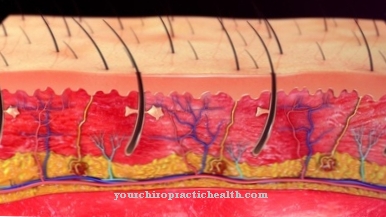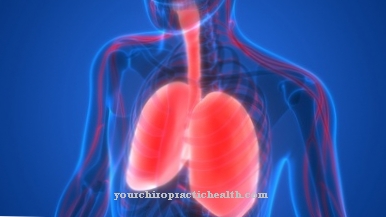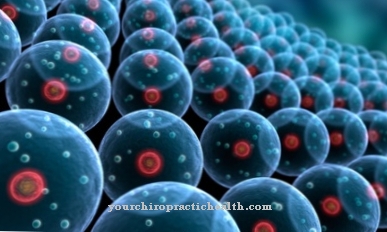Minerals are vital for the human organism. They contribute to the optimal flow of many biochemical processes in the body. By a Demineralization However, the body loses important minerals, which can lead to diseases.
What is demineralization

The medical term demineralization describes a process in which certain minerals are increasingly released from an organ, a hard tissue or a liquid body substance.
Demineralization is also among the terms Demineralization and Demineralization known. If, for example, only the calcium is released from one of the body structures, then it is a matter of decalcification, also called decalcification.
For the human organism, this biochemical process also means a pathological loss of vital minerals. This particularly affects the minerals calcium and phosphorus. However, a breakdown of potassium and magnesium can also lead to severe impairments in the body.
Those organs and tissues that naturally have a high content of minerals suffer most from mineral loss. Above all, this includes the bones and teeth, the structure of which consists mainly of minerals.
The cause of demineralization can either be an increased breakdown of minerals from the tissues or an insufficient storage of minerals in the tissues. An insufficient supply of minerals through food can also lead to demineralization. The cause of demineralization of the teeth are usually acids that attack the tooth enamel. If the bones are demineralized, the bone substance is affected. The consequences are expressed by the body structures becoming fragile. Long-term demineralization is followed by various clinical pictures.
Function & task
All minerals (bulk elements and trace elements) are important building blocks of the body and are involved in numerous biochemical processes. For example, they prevent diseases and keep the body working properly. The minerals calcium, magnesium and phosphorus play a major role in building bones. The calcium also contributes to the healthy build-up of tooth enamel. The mass elements are also found in the intra- and extracellular fluids. Here they function as part of organic substances such as enzymes and DNA. The trace elements, on the other hand, only occur as cofactors of proteins.
Certain processes can only run normally if there are sufficient minerals in the body. A person's need for minerals depends on age, gender and state of health. However, if the mineral requirement is not met permanently, there is a risk of deficiency symptoms. Demineralization also leads to a long-term mineral deficiency, which has a negative impact on human organs and tissues. In the worst case, there is a risk of serious health consequences. These express themselves in diseases such as osteoporosis or tooth decay.
Illnesses & ailments
If there is demineralization, diseases such as caries, osteomalacia, osteopenia or osteoporosis can occur. The disease that develops as a result of demineralization depends entirely on which mineral salts a person loses.
Tooth decay is the decalcification of the tooth enamel. Those who consume sweets frequently have a higher risk of developing tooth decay. Sugary foods cause bacteria such as Streptococcus mutans and lactobacteria to build up on the tooth surface. These excrete organic acids as metabolic products, which attack the tooth enamel. The acids, in turn, remove calcium from the tooth by lowering the natural pH of the tooth enamel. The dental plaque should therefore be removed regularly and carefully to avoid demineralization through acids. If intensive oral hygiene is not observed, the tooth threatens to become porous. An unhealthy condition of the tooth allows bacteria to access the deep tooth structure. This creates caries holes that can lead to complete destruction of the tooth.
Osteomalacia is a softening of the bone. If this disease occurs in childhood, it is known as rickets. This disease is very painful for those affected. Osteomalacia has many causes. These include, for example, an insufficient intake or reduced intake of calcium, a high excretion of phosphorus or a vitamin D deficiency. The treatment of osteomalacia aims to supply the patient with the missing minerals in high doses.
Osteopenia is a precursor to osteoporosis. This is to be understood as an age-related reduced bone density. Osteopenia is when the T-Score is between -1.0 and -2.5. If the bone density continues to decrease, the patient is threatened with osteoporosis. This disease can also be associated with demineralization, for example when the minerals calcium and phosphorus are released from the bones.
Demineralization can be determined in a blood count or with the help of a bone density measurement. The earlier demineralization is diagnosed, the faster therapeutic measures can be taken. These can not only slow down the development of a disease, but in some cases even stop it.













.jpg)

.jpg)
.jpg)











.jpg)